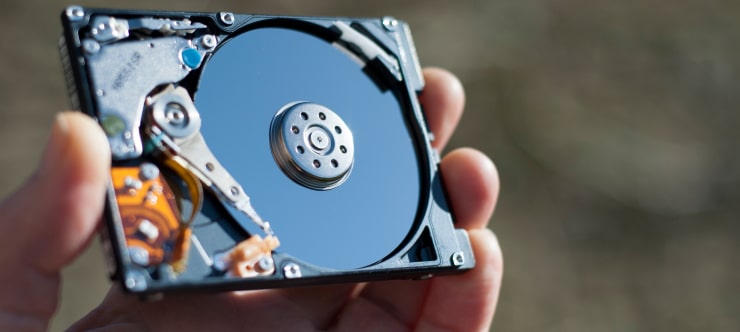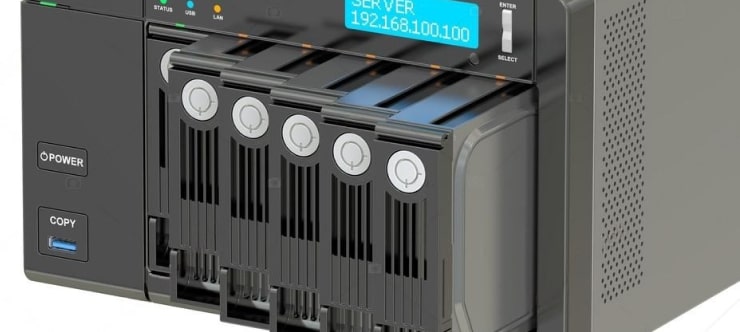How Does Virtualization Help With A Disaster Recovery Plan

I think there's an issue with my storage device, but I'm not sure
Start a free evaluationAs businesses become increasingly reliant on their digital assets, it is critical that they have a disaster recovery plan in place to protect against unexpected events such as hardware failures, natural disasters, or cyber-attacks. And virtualization can help with disaster recovery plans.Virtualization has emerged as a critical tool for businesses to have in their disaster recovery toolkit. It is an efficient and effective way to recover systems and applications in the event of a disaster. By leveraging virtualization software, businesses can minimize recovery time, test their disaster recovery plans, and duplicate their data to remote sites, making it easier to access data following an unexpected event.Overall, virtualization enables businesses to create a disaster recovery strategy that is flexible, effective, and reliable. By minimizing downtime, ensuring data integrity, and providing users with access to critical systems, virtualization helps businesses quickly recover from disasters and return to normalcy.
What is virtualization?
Data virtualization refers to the process of creating a virtual version of something, such as operating systems, servers, storage devices, and network resources.In the world of computing, with virtualization developers can run multiple operating systems or applications on one physical hardware. It allows organizations to consolidate hardware resources and optimize their use while reducing costs.Virtualization software creates a virtual machine (VM) within a physical machine (called the host machine) allowing the user to run multiple operating systems and applications simultaneously on the same hardware. This isolated sandbox environment provides greater security, better resource management, and more efficient use of computer resources.

How does virtualization help data protection?
By minimizing the risk of data loss and unauthorized access, virtualization helps businesses ensure that their critical data remains secure and protected.Virtualization provides several layers of data protection to help keep data secure:
- Backup and Recovery. Virtualization platforms enable businesses to take backups of the entire server and recover the server to a previous state when required. This means that in the event of system failures or outages, businesses can quickly restore their systems to a previous state, minimizing downtime.
- Isolation. Each virtual machine runs independently of others, creating an isolated environment. This helps protect against data loss, unauthorized access, and malicious attacks.
- Disaster Recovery. Virtualized environments can replicate data and applications in real-time or in periodic intervals to a disaster recovery site. This makes it easier to revert to a stable environment in case of a disaster.
- Encrypted Connections. Virtual environments use encrypted connections to protect data in transit. This ensures that data is always secure, even when transmitted across a network.
Virtualization and disaster recovery
You can’t know when the next natural disaster will hit, or if a human error will lead to data loss. You can though anticipate the worst and take proactive actions to prevent data loss and minimize the effects of an incident.A cyberattack can put your business at risk as much as a fire or a distracted employee accidentally deleting the entire month's data. With a disaster recovery plan, you can organize the actions to take in case of any disaster or incident. This will speed up the response time and minimize downtime. And that can make the difference between saving your business or closing the doors forever.Downtime can cost $1,467 per minute to your business. A recovery plan costs almost nothing to your business and guarantees business continuity regardless of the incident it may face.Data virtualization not only can improve the dynamics of your business daily routine but can also help you protect the data and keep business continuity. It can prevent huge losses, minimize the effect of disasters, and help you with your disaster recovery by storing every bit of data in the cloud servers.This is how data virtualization can help you with disaster recovery:
1. Reducing downtime
Virtualization software allows businesses to create image-based backups (also known as snapshots) of their virtual machines. This means that in the event of a disaster, businesses can restore their systems quickly, sometimes almost instantly, rather than hours or days needed to rebuild systems from scratch.Therefore, you can reduce and even eliminate downtime. Just access the data from another device to keep working.
2. Create off-site backups
When you create your business backups you must consider having at least one copy of your files on an off-site backup. This will allow you to rapidly recover your files if anything helps with your local business data and storage device. Your server can have issues, but power outages, fires, and other natural disasters can also affect the place.Virtualization can automatically send your backup files to your off-site backup device.
3. Recover data from failed drives
If your hard drive dies or your RAID fails, your data virtualization system can save you. Since it is cloud storage, virtualization can keep copies of your files even if your storage devices stop working.
4. Test Disaster Recovery Plans
Virtualization can create a test environment on the system for testing the disaster recovery plan whenever required. This allows businesses to ensure that their disaster recovery plan is effective and can be executed efficiently when required.
5. Duplicate Data for Remote Access
With virtualization, businesses can duplicate their data in real-time or at specific intervals to a remote site. This allows remote users to access their data, applications, and systems in the event of a disaster.
Summary
The reliance of businesses on technology highlights the importance of a disaster recovery plan in protecting their digital assets against unexpected events. In this regard, virtualization has become a critical tool for businesses by providing an efficient and effective way to recover systems and applications. Virtualization software allows image-based backups to be taken, which enables businesses to restore their systems quickly in the event of a disaster, reducing recovery time and minimizing downtime. Disaster recovery plans can also be tested using virtualization, ensuring that they would be efficient when required. Virtualization can also store data in the cloud, enabling remote access in case of a disaster. Ultimately, virtualization provides robust backup, recovery, disaster recovery, and security measures, ensuring that businesses' critical data remains secure and protected.However, if you lost your data and have no recovery plan or backups, data recovery services can help you restore your files and resume your work.SalvageData experts are not afraid to think outside the box to restore even the most impossible data. Open a recovery request service and make sure your data is securely recovered.
Related services
These are the most commonly requested data recovery services. At our headquarters' cleanroom lab, our certified engineers conduct a thorough review of any type of physical storage device, determining if there is logical or physical damage and carefully restoring all of the lost files.ces.

External Drive Data Recovery
We recover data from both external SSD and HDD drives. Rely on certified experts to restore your important files from damaged or corrupted external drives.

Hard Drive Data Recovery
Recover data from all brands of HDD, PC hard drives, and hybrid disks. Our specialists ensure fast and secure recovery for any data loss scenario.

NAS Data Recovery
Recover data from NAS devices, including RAID configurations. Our team handles all types of NAS systems and ensures data recovery with minimal downtime.

RAID Data Recovery
Our RAID data recovery services cover RAID 0, 1, 5, 10, and other configurations. We offer expert solutions for failed, degraded, or corrupted RAID arrays.

SAN Data Recovery
Our team specializes in handling SAN devices from leading manufacturers like Dell EMC, HP, and IBM, ensuring efficient recovery with minimal disruption to your operations.

SD Card Data Recovery
Our recovery experts specialize in restoring data from SD and memory cards. We guarantee quick recovery with a no-data, no-charge policy.

SSD Data Recovery
Our data recovery experts handle all SSD data loss scenarios with advanced tools, ensuring maximum recovery with high-security protocols.

USB Flash Drive Data Recovery
Recover lost data from USB flash drives, regardless of the damage or brand. We offer free in-lab evaluations to assess data recovery needs.
If you’re unsure about which data recovery service to choose, let our team assist you in selecting the appropriate solutions. We understand the anxiety that comes with a sudden drive failure, and we are more prompt in our actions compared to other recovery service providers.



